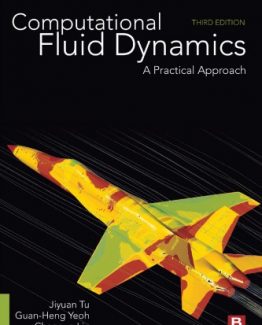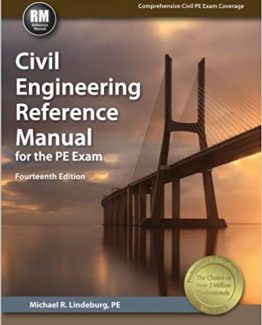Explicit Instruction: Effective and Efficient Teaching by Anita L. Archer, ISBN-13: 978-1609180416
[PDF eBook eTextbook]
- Publisher: The Guilford Press; Illustrated edition (November 9, 2010)
- Language: English
- 290 pages
- ISBN-10: 1609180410
- ISBN-13: 978-1609180416
Explicit instruction is systematic, direct, engaging, and success oriented–and has been shown to promote achievement for all students. This highly practical and accessible resource gives special and general education teachers the tools to implement explicit instruction in any grade level or content area. The authors are leading experts who provide clear guidelines for identifying key concepts, skills, and routines to teach; designing and delivering effective lessons; and giving students opportunities to practice and master new material. Sample lesson plans, lively examples, and reproducible checklists and teacher worksheets enhance the utility of the volume. Purchasers can also download and print the reproducible materials for repeated use. Video clips demonstrating the approach in real classrooms are available at the authors’ website: www.explicitinstruction.org.
Table of Contents:
1. Exploring the Foundations of Explicit Instruction 1
Elements of Explicit Instruction 1
Underlying Principles of Effective Instruction 4
A Convergence and Accumulation of Evidence Supporting Explicit Instruction:
A Summary of Selected Research 13
Response to Possible Concerns about Explicit Instruction 17
Chapter Summary and a Final Case Study 21
2. Designing Lessons: Skills and Strategies 23
Opening of the Explicit Lesson 24
APPLICATION 2.1. EXAMPLE: OPENING OF AN EXPLICIT LESSON 28
Body of the Explicit Lesson 29
APPLICATION 2.2. ANALYSES OF LESSON OPENING, MODELING, AND PROMPTED
OR GUIDED PRACTICE 34
Closing of the Explicit Lesson 39
APPLICATION 2.3. MODEL LESSON: ALGEBRA LESSON ON PARENTHESES 41
APPLICATION 2.4. MODEL LESSON: DETERMINING THE MAIN IDEA 44
APPLICATION 2.5. MODEL LESSONS: THREE CONSECUTIVE SENTENCE-COMBINING LESSONS 47
Chapter Summary 51
APPLICATION 2.6. IDENTIFYING POTENTIAL PROBLEMS AND GENERATING POSSIBLE SOLUTIONS 52
APPLICATION 2.7. DESIGNING AN EXPLICIT LESSON 52
3. Designing Lessons: Vocabulary and Concepts 53
Preparation for Explicit Vocabulary Instruction 55
APPLICATION 3.1. VOCABULARY SELECTION FOR PRIMARY READ-ALOUD 61
APPLICATION 3.2. VOCABULARY SELECTION FOR FIFTH-GRADE CHAPTER BOOK 63
APPLICATION 3.3. VOCABULARY SELECTION FOR MIDDLE SCHOOL SOCIAL STUDIES 64
APPLICATION 3.4. CREATING STUDENT- FRIENDLY EXPLANATIONS 66
APPLICATION 3.5. DETERMINING CRITICAL ATTRIBUTES FROM DEFINITIONS 72
APPLICATION 3.6. DESIGNING EXAMPLES AND NON-EXAMPLES 73
Explicit Vocabulary Instructional Routine 75
APPLICATION 3.7. DESIGNING A VOCABULARY LESSON TO TEACH WITH THE BASIC
INSTRUCTIONAL ROUTINE 76
Vocabulary Instruction Extensions 84
Chapter Summary 91
4. Designing Lessons: Rules 92
Select Appropriate Rules for Explicit Instruction 93
Develop Examples and Non-Examples 93
APPLICATION 4.1. DETERMINING CRITICAL ATTRIBUTES IN A RULE 94
APPLICATION 4.2. CREATING EXAMPLES TO ILLUSTRATE A RULE 96
APPLICATION 4.3. CREATING NON-EXAMPLES TO ILLUSTRATE A RULE 99
Instructional Routine for Teaching a Rule 100
APPLICATION 4.4. WORDING OF RULES 101
APPLICATION 4.5. DESIGN OF RULE LESSONS 107
Chapter Summary 108
5. Organizing for Instruction 109
Organizing the Physical Space 109
APPLICATION 5.1. EVALUATING THE PHYSICAL ORGANIZATION OF THE CLASSROOM:
SETTING THE STAGE 113
APPLICATION 5.2. ANALYSES OF CLASSROOM ARRANGEMENTS 114
Establishing Classroom Rules 117
APPLICATION 5.3. ANALYSES OF CLASSROOM RULES 118
Establishing Routines and Procedures 121
APPLICATION 5.4. SITUATIONS REQUIRING A CLASSROOM ROUTINE OR PROCEDURE 122
Chapter Summary 130
6. Delivering Instruction: Eliciting Responses 131
Require Frequent Responses 132
Successful Responding 162
APPLICATION 6.1. ANALYSES OF ACTIVE PARTICIPATION LESSONS 164
Alternative Passage-Reading Procedures 168
Chapter Summary 171
7. Delivering Instruction: Other Critical Delivery Skills 173
Monitor Student Performance Carefully 173
Provide Immediate Affirmative and Corrective Feedback 174
APPLICATION 7.1. EXAMPLES AND NON-EXAMPLES OF CORRECTIONS 180
APPLICATION 7.2. EXAMPLES AND NON-EXAMPLES OF PRAISE 190
Deliver the Lesson at a Brisk Pace 193
APPLICATION 7.3. LESSONS ILLUSTRATING SLOW AND BRISK PACE 195
Chapter Summary 197
APPLICATION 7.4. OBSERVATION OF A LESSON 198
8. Providing Appropriate Independent Practice 201
Initial Practice 203
Distributed Practice 203
Cumulative Practice and Cumulative Review 204
APPLICATION 8.1. DESIGNING INITIAL, DISTRIBUTED, AND CUMULATIVE PRACTICE 208
What Will Be Practiced? 209
How Will the Assignment Be Designed? 210
APPLICATION 8.2. SELECTING PRACTICE ACTIVITIES 214
APPLICATION 8.3. CASE STUDY: INDIVIDUALIZING SAMUEL’S ASSIGNMENTS 217
How Will the Assignment Be Presented to Students? 223
How Will the Assignment Be Evaluated and Feedback Provided? 224
What Routines Will Be Put in Place to Facilitate Independent Practice? 227
Homework 233
Chapter Summary 243
Conclusion 244
Reproducible Materials 245
Feedback on Application Exercises 253
References 279
Index 287
Anita L. Archer, PhD, is an educational consultant to school districts on explicit instruction, the design and delivery of instruction, behavior management, and literacy instruction. She has taught elementary and middle school students and is the recipient of 10 awards honoring her excellence in teaching and contributions to the field of education. Dr. Archer has served on the faculties of San Diego State University, the University of Washington in Seattle, and the University of Oregon in Eugene. She is nationally known for her professional development activities, having presented in every state over the course of her 40-year career. Dr. Archer is coauthor of numerous curriculum materials addressing reading, writing, and study skills (with Mary Gleason), and of the book Explicit Instruction (with Charles A. Hughes). She is also author of the professional development DVDs Golden Principles of Explicit Instruction, Active Participation: Getting Them All Engaged, Elementary Level, and Active Participation: Getting Them All Engaged, Secondary Level.
Charles A. Hughes, PhD, is Professor of Special Education in the Department of Educational and School Psychology at The Pennsylvania State University and Adjunct Senior Scientist at the University of Kansas Center for Research on Learning in Lawrence. Prior to joining the Penn State faculty in 1985, Dr. Hughes worked in schools for 14 years as a general and special education teacher, a state-level consultant, and an educational diagnostician. His research interests focus on the development and validation of self-instructional strategies to help students with learning and behavior problems manage their academic and classroom behaviors. He has published over 100 articles, books, book chapters, and curriculum materials and has served as President and Executive Director of the Council for Exceptional Children’s Division for Learning Disabilities and editor of the Council’s journal Learning Disabilities Research and Practice.
What makes us different?
• Instant Download
• Always Competitive Pricing
• 100% Privacy
• FREE Sample Available
• 24-7 LIVE Customer Support






Reviews
There are no reviews yet.